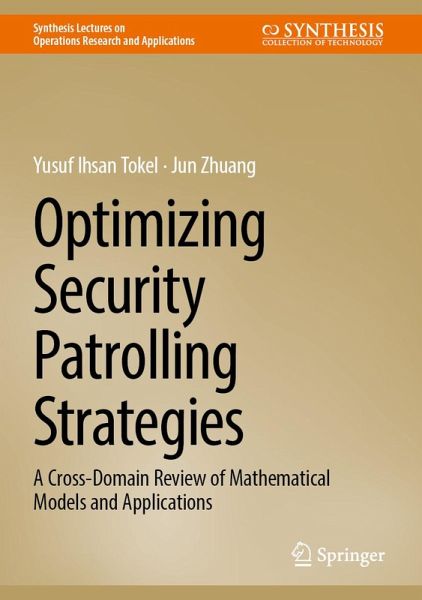
Optimizing Security Patrolling Strategies
A Cross-Domain Review of Mathematical Models and Applications
Versandkostenfrei!
Erscheint vorauss. 20. Dezember 2025
29,99 €
inkl. MwSt.

PAYBACK Punkte
15 °P sammeln!
This book presents a comprehensive examination of crime patrolling problems across various domains, including robotics, security, and law enforcement, with a focus on the mathematical models used to optimize patrolling strategies. Patrolling is a critical crime prevention and deterrence strategy, requiring the effective allocation of resources to address evolving security challenges. In addition, patrolling is one of the most effective and widely adopted crime prevention and deterrence strategies worldwide. It is integral to security agencies such as police and military forces across various d...
This book presents a comprehensive examination of crime patrolling problems across various domains, including robotics, security, and law enforcement, with a focus on the mathematical models used to optimize patrolling strategies. Patrolling is a critical crime prevention and deterrence strategy, requiring the effective allocation of resources to address evolving security challenges. In addition, patrolling is one of the most effective and widely adopted crime prevention and deterrence strategies worldwide. It is integral to security agencies such as police and military forces across various domains, including land, air, and maritime areas. As such, effective patrolling requires the coordination of manpower, technological resources, and policies to address evolving security challenges. The authors review recent research on robotic patrolling, multirobot systems, and police patrolling and also explore advances in modeling, optimization, and practical applications. In addition, the author s analysis categorizes studies by core modeling themes, such as Game Theory, Mathematical Optimization, and Stochastic methods, and highlights the secondary modeling themes that frequently complement the primary approaches. Each study is categorized by fields including, but not limited to domain, patrolling focus, area representation, and solution methodology to facilitate cross-comparison. The book identifies gaps in current research, particularly the lack of a holistic examination of patrolling from robotic, autonomous, human, and hybrid perspectives, and proposes future directions for research in this evolving field.












